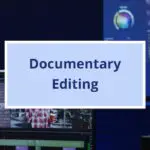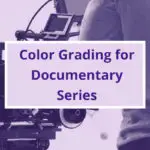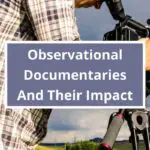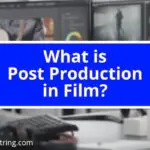The Ken Burns effect, named after the renowned documentary filmmaker, is a popular zooming technique used in video production.
It is a slow and gradual zoom, with panning effects, typically used to focus on specific areas within a still image, creating a sense of motion and depth.
What is the Ken Burns Effect?
The Ken Burns Effect is a visual technique that has become a staple in documentary filmmaking. It is named after filmmaker Ken Burns, who popularized the technique in his acclaimed documentaries such as “The Civil War” and “Baseball”. The technique involves panning and zooming over still images, giving the illusion of movement and adding depth to the images.
The technique is achieved by slowly panning across an image while simultaneously zooming in or out, which creates a subtle, yet powerful effect. This technique is commonly used to bring old photographs to life, making them seem more dynamic. It also allows filmmakers to highlight specific elements within the photograph by zooming in on them.
The Ken Burns Effect has become so popular that it is now available as a feature in many video editing software packages. It has become one of the most widely recognized and celebrated stylistic choices in documentary filmmaking, and it has had a significant impact on how filmmakers present archival material.
Overall, the Ken Burns Effect is an essential technique for any filmmaker looking to elevate their storytelling by adding a cinematic touch to their still images.
Is the Ken Burns Effect hard to master?
Mastering the Ken Burns effect requires an understanding of the different types of panning and zooming effects, as well as the length and timing of the transitions.
It also requires excellent timing and pacing skills, as the transitions need to be precise and well-timed.
While the Ken Burns effect may seem easy to use, mastering it is no easy task. It requires significant practice and skill to create seamless, natural-looking transitions that enhance the narrative of the video.
However, with dedication and practice, anyone can master the Ken Burns effect and create visually compelling videos that capture the attention of their audience.
Video Editing Solutions
- ken burns effect in imovie
- ken burns effect in final cut pro
- ken burns effect davinci resolve 17
- ken burns effect capcut
- ken burns effect clipchamp
- ken burns effect adobe premiere pro
- ken burns effect adobe rush
- ken burns effect canva
- ken burns effect filmora
- ken burns effect lumafusion
Can the Ken Burns Effect be applied to videos?
Yes, the Ken Burns effect can be applied to videos as well as still images. By adjusting the zoom and cropping, video editors can create interesting effects.
The movement starts at one point and ends at another, in a clip which can be split to make it play faster. The effect can be changed to crop to fill in the second segment.
Can the Ken Burns effect be copied and pasted?
Yes, the Ken Burns effect can be copies and pasted during video editing. You can create a sequence that goes from top to bottom, right to left, and then right to left again.
For a different effect, you can switch the Ken Burns effect to the crop to fill effect for the second sequence. The start frame becomes the crop, so switch frames before changing the effect.
Who Was Ken Burns?
Ken Burns is an American documentary filmmaker who has created some of the most iconic and influential films in the history of cinema. Born in 1953 in Brooklyn, New York, Burns developed a passion for storytelling at an early age and went on to make countless movies that explore different aspects of American culture and history.
One of the most notable collaborations in Burns’ career was with his brother, Ric Burns, who is also a filmmaker. Together, they have produced several award-winning documentaries, including “The Civil War,” “Baseball,” and “The War,” which have become some of the most popular films in the genre.
See also: Ken Burns films, in order
In addition to his work with his brother, Ken Burns has also worked with a team of talented writers, researchers, and historians to produce his films.
His approach to filmmaking involves taking a deep dive into the subject matter, often using personal stories, archival footage, and interviews with experts to create a comprehensive and compelling narrative.
His work has been widely praised for its accuracy, attention to detail, and emotional depth.
Ken Burns has received numerous awards and accolades throughout his career, including multiple Emmys, and a Peabody award, among others.
Overall, Ken Burns’ contribution to documentary filmmaking is immeasurable and his work has left an indelible mark on the industry, inspiring a new generation of filmmakers to tell stories that matter and explore the complexities of our history and culture.
Interested in Documentary Filmmaking?
Find some inspiration: Documentary ideas for students
Ken Burns Emmy Awards
Ken Burns has received 15 Nominations at the Emmys, with five Emmy wins.
The body has also awarded the American documentarian an Honor in its 2022 Hall of Fame, recognising the filmmaker’s legacy for the film and video production industry.
Awards & Nominations: 15 Nominations, 5 Emmys, and 1 Honor
- Hall of Fame – 2022 – WINNER – Ken Burns, as Honoree – Television Academy
- Outstanding Directing For A Documentary/Nonfiction Program – 2018 – NOMINEE – Ken Burns, Directed by – The Vietnam War – “Episode 8: The History Of The World (April 1969-May 1970)” – PBS – Florentine Films and WETA, Washington, DC
- Outstanding Documentary Or Nonfiction Series – 2015 – NOMINEE – Ken Burns, Executive Producer – Cancer: The Emperor Of All Maladies – PBS – A production of Florentine Films, Laura Ziskin Pictures and WETA Washington, D.C. in association with Ark Media
- Outstanding Documentary Or Nonfiction Series – 2015 – NOMINEE – Ken Burns, Produced by – The Roosevelts: An Intimate History – PBS – Florentine Films
- Outstanding Nonfiction Series – 2010 – WINNER – Ken Burns, Produced By – The National Parks: America’s Best Idea – PBS – A Production of Florentine Films and WETA Washington, D.C.
- Outstanding Directing For Nonfiction Programming – 2008 – NOMINEE – Ken Burns, Director – The War – “Pride of Our Nation” – PBS – The American Lives II Film Project, LLC in association with WETA Washington, DC
- Outstanding Nonfiction Special – 2005 – WINNER – Ken Burns, Producer – Unforgivable Blackness: The Rise And Fall Of Jack Johnson – PBS
- Outstanding Directing For Nonfiction Programming – 2005 – NOMINEE – Ken Burns, Directed by – Unforgivable Blackness: The Rise And Fall Of Jack Johnson – PBS
- Outstanding Cinematography For Non-Fiction Programming – 2001 – NOMINEE – Ken Burns, Cinematographer – Jazz – PBS
- Outstanding Non-Fiction Series (Informational) (Area Award: Possibility of one, more than one or no – 2001 – NOMINEE – Ken Burns, Producer/Director – Jazz – PBS
- OUTSTANDING INFORMATIONAL SERIES – 1995 – WINNER – Ken Burns – Baseball (A General Motors Mark Of Excellence Pres – PBS
- OUTSTANDING INDIVIDUAL ACHIEVEMENT – informational programming – 1995 – NOMINEE – Ken Burns – Baseball (A General Motors Mark Of Excellence Pres – PBS
- OUTSTANDING INFORMATIONAL SPECIAL – 1992 – NOMINEE – Ken Burns – EMPIRE OF THE AIR: THE MEN WHO MADE RADIO A GENER – PBS
- OUTSTANDING individual achievement – informational programming – 1991 – WINNER – Ken Burns – The Civil War A General Motors Mark Of Excellence – PBS
- OUTSTANDING INFORMATIONAL SERIES – 1991 – WINNER – Ken Burns – The Civil War A General Motors Mark Of Excellence – PBS
- OUTSTANDING INFORMATIONAL SPECIAL – 1986 – NOMINEE – Ken Burns – The Statue of Liberty – PBS
More about Filmmaking
- Low Budget Filmmaking: More for Less
- Lighting Department Film Roles
- Shooting An Interview
- Documentary Editing
- What is Sound Design in Film?
- Color Grading for Documentary Series or Film
- Film Set Etiquette: Professional Behaviour on Set
- Observational Documentaries And Their Impact
- Essential Skills for Film Industry Professionals
- How to Create a Storyboard in 6 Simple Steps
- What Makes a Film Successful
- Breaking into the Film Industry without Experience
- Sports Documentary Filmmaking
- How to Create a Storyboard Using Sticky Notes
- Remove Background Noise From Video
- Why Do Filmmakers Use Clapper Boards?
- Indie Films
- Indie Filmmaking
- What is Post Production in Film
- Ken Burns Effect: Creating Eye-Catching Sequences






















